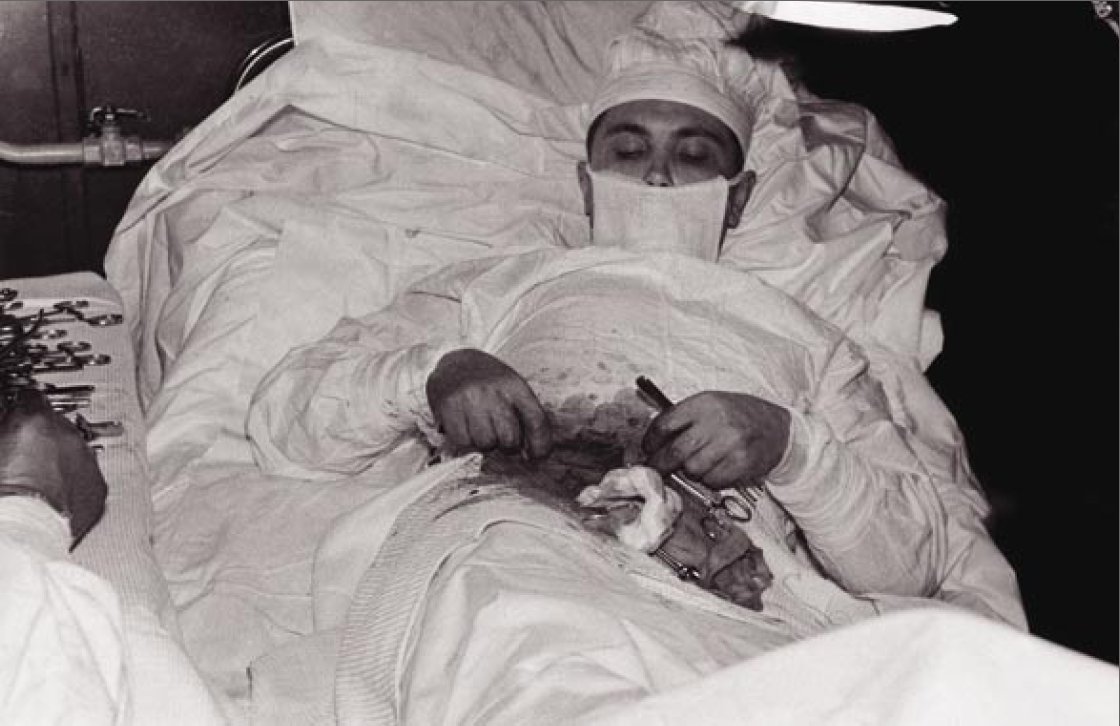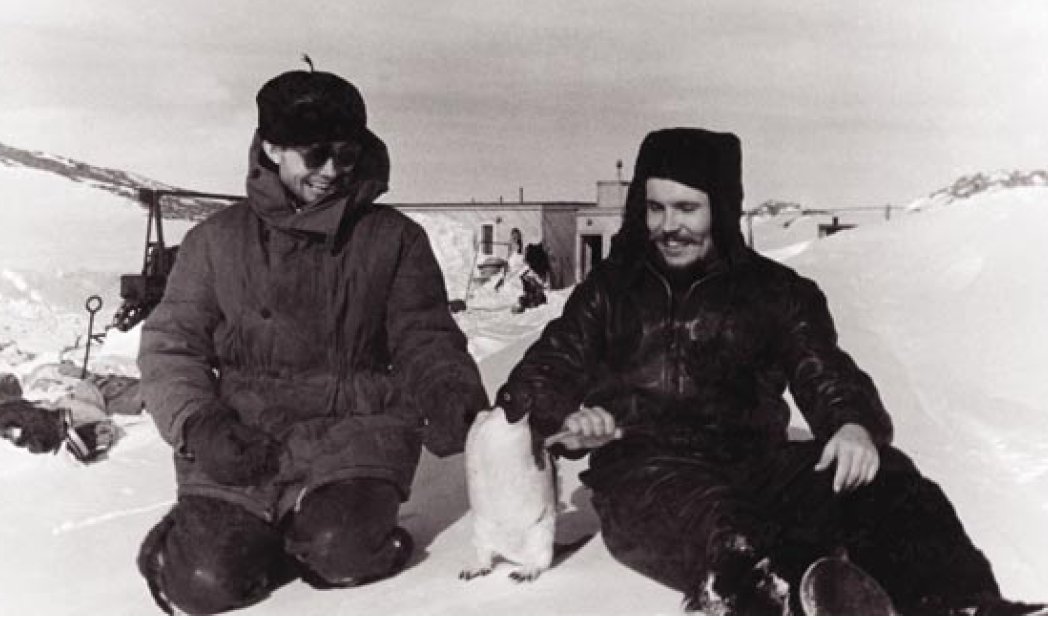Self-operation: Tracking down a good story
Down here in Antarctica with a reasonable amount of free time, it is easy to let the mind and body slow into the sweet abyss of ennui. I’m especially concious of what this year means to my career; certainly it is an unparalleled life experience and I’m learning many skills (leadership, management, paperwork, snow-shovelling), but medically it has the potential to be a vacuum. Coming from a hectic ER job into a setting where I might only have to consult once or twice a week might sound wonderful, but I’m acutely aware that each passing day in Antarctica is at the expense of 30-100 patient’s worth of experience and procedures that I would have been performing back home. To counter the inevitable degradation of skills and mental fitness, I have made several promises to myself: I spend time doing minor tasks with surgical implements so as to maintain dexterity; I am studying for examinations on my return; I take part in online discussions and tutorials; and I am reading as many relevant journal articles as possible.
Of course, most of the articles that cross my computer screen are in the fields that I favour – emergency medicine, anaesthesia and critical care, trauma, wilderness, remote and isolated medicine: it’s easier to pay attention to a paper if I can apply it to my current environment. While reading a paper on the management of appendicitis in remote environments I came across a reference to an event which has become Antarctic, if not urban, legend. A doctor at a remote base contracted appendicitis, and lacking any other medical-trained help, had to remove his own appendix under local anaesthesia. I had heard the story through enough sources to believe there must be truth behind it, and when I saw the reference – Rogozov KI: Self-operation. Soviet Antarctic Expedition Information Bulletin 4:233, 1964 – I immediately became obsessed with getting my hands on the original article.
As one might expect, finding an online source of an article published in 1964 in a Soviet journal is not a simple task. I was able to find sources that quoted the reference, and obtain a 2004 article in the Journal of the American College of Surgeons that quoted it (Campbell et al: Nonoperative Treatment of Suspected Appendicitis in Remote Medical Care Environments: Implications for Future Spaceflight Medical Care, JACS, 2004), but Rogozov’s original eluded me. However, I have a source in times of need – the international Critical Care Mailing List, CCM-L. CCM-L is a collection of brilliant (and sometimes eclectic!) minds, and has brought me many happy hours of learning and amusement. The doctors, nurses, paramedics and allied professionals on the list as a collective are also incredibly resourceful, multi-skilled and internationally situated: many odd requests have successfully been solved by this hive mind. I duly posted my request and sat back to watch the fireworks.
Over the course of a few days the story unfolded – two separate CCM-L’ers found physical copies of the journal listed with libraries in Washington DC and at Canterbury University in New Zealand. Incredibly, a CCM-L member was good friends with Vladislav Rogozov, a Czecholsovakian anaesthetist, who is the son of Dr Leonid Rogozov, who had performed the operation on himself on 30 April 1961. The story was published again in an article written by Rogozov junior in a Czech popular science magazine (Vesmir, 2004), which had photographs of the event and the surgeon/patient playing with a penguin during his subsequent recovery. Interestingly, Leonid Rogozov was 27 at the time of the surgery – close to my own age – and the event occurred at the Novolazarevskaya base, which is the closest Russian base to SANAE IV (about 800km away) and now a major local air hub during the Antarctic summer.
At that time, a fellow CCM-L’er was amazed by how small the world seemed to be, remarking “Truly this shows how small the world has become when a South African physician living in Antarctica can make a request on an American listserv that is answered by a Czech anesthetist who happens to know the son of the Russian surgeon about whom the article was published. (Now all we need is for one of our Kiwi colleagues to say he left it in the home of one of our Indian compatriots.)” Wa-ha-haaaa (*evil laugh*)… little did he know…
Another dedicated list member was working on the Washington DC library angle, so I turned my attention to New Zealand. Via the Canterbury University library website I was able to find the reference – right down to the shelf number – and contact the librarian via email. In the meantime, another prominent New Zealand ICU specialist was on the case, and had contacted a fellow critical care specialist who also just ‘happened’ to have an appointment at Canterbury’s engineering department (yes, I know, I couldn’t make this weirder if I tried) to have a look when he was on campus. However, the library archivist beat him to it, and a scanned copy of Leonid Rogozov’s 1961 article arrived in my email this morning – sent from New Zealand, by a Malaysian librarian. Small world, indeed.
Dr Leonid Rogozov performs surgery to remove his own appendix
In plain, almost emotionless language, Rogozov describes the diagnosis and preparations for the operation. He recognised his own illness and worsening condition, but realised that the absence of a support aircraft and inclement weather precluded evacuation to another base. The course of action was decided: with the team’s meteorologist holding the retractors, a driver to hold the mirror and other scientists passing surgical implements, he sat in a reclined position and cut out his own appendix under local anaesthetic. During the operation he passed out, but was able to continue and complete the procedure in a little less than two hours. He records his post-operative condition as ‘moderately poor’ but goes on to say that he made a full recovery and had resumed all duties in two weeks. Truly, the man deserves his position in Antarctic legend.
For the sake of those who might want to read the brief and factual account, I have made the PDF available here for download. I’m trying to get permission to post the photographs as well.
Rogozov KI: Self-operation. Soviet Antarctic Expedition Information Bulletin, 1964
Other stories of feats of medical ingenuity in Antarctica exist; the American doctor at the South Pole who diagnosed her own breast cancer by biopsy is a more recent example. The great Antarctic continent seems to culture creativity amongst those who dare to occupy it: scattered as we are into insignificance in the great emptiness, it is humankind’s ingenuity rather than our technology which shines brightest.
Rogozov with a compatriot and penguin after his recovery.
Photographs courtesy of Dr Vladislav Rogozov. Used with permission.


June 1st, 2009 at 12:07 pm
Just back as ship’s surgeon from an Antarctic voyage from Ushaia to Cape town on board the barque Europa (www.barkeuropa.com) I lectured for our surgical residents on my trip and could include your excellent research on the self-operation of Dr Rogozov. Thank you very much.
Dick van Geldere MD PhD
Dept of Surgery
Isala klinieken
Zwolle
The Netherlands
January 12th, 2010 at 5:11 am
[…] http://www.doctorross.co.za/antarctica/self-operation-tracking-down-a-good-story […]